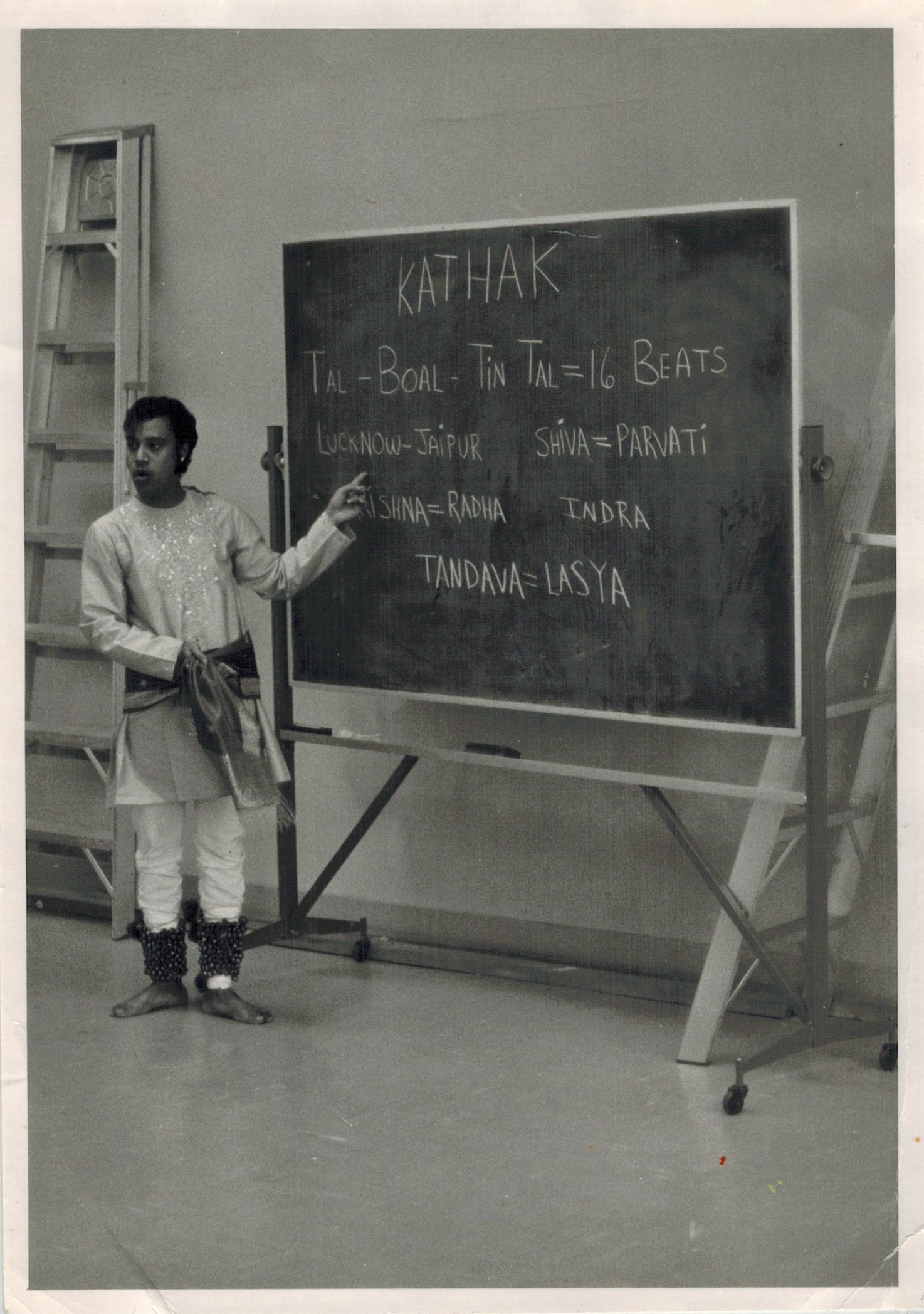
Pandit Chitresh Das’
Nine Principles
सद्व्यवहार और तहजीब | “Sadvyavhar aur Tehzeeb”
Attitude and Etiquette
One must approach the study of Kathak with humility, an open mind, and respect for oneself and for the Guru.
“My Guruji was more concerned with how I walked into the dance class than with how I danced.” - Pandit Chitresh Das
2. प्रशिक्षण | “Prashikshan”
Study and training in abhinaya, the art of mime and expression, and the four elements of Kathak
Kathak comes from word “katha”, meaning story, and the kathaka is the storyteller. Abhinaya, or the art of expression and mime is at the heart of this story telling. A kathaka must study and train in abhinaya and in all four elements of kathak dance: tayari (virtuosity of technique, readiness), laykari (deep understanding of rhythm and timing), khoobsurti (beauty and grace), and nazakat (delicacy and subtlety).
3. रियाज़ मेहनत के साथ | “Riyaz mehenat ke sath”
Systematic practice with deep exertion
The mantra at the Chitresh Das Institute is “Practice, Practice, Practice”.
“Pandit Chitresh Das has taught us how to tap the Divine energy in ourselves through the power of practice...When I am into deep practice and the initial resistance of physical and mental exertion subsides, I enter a realm where there is no "other" - where time is no more.”- Michele Zonka
4. सर्वज्ञान |“Sarvgyan”
Complete knowledge of kathak
To gain true knowledge of the art form one must also study Indian history, philosophy, mythology, the ancient Indian texts, Indian music, and the sophisticated mathematics involved in the Indian classical system.
5. उपज | “Upaj”
Improvisation
As the core of Kathak dance, Upaj leads to true freedom of expression and can only be achieved through training of the body, education of the mind, and riyaz with mehenat. Spontaneity is an integral aspect of everyday life - one must learn to be sharp, keen, and focused to handle life’s unexpected occurrences.
“Freedom comes from refined discipline with responsibility.” - Pandit Chitresh Das
6. शिक्षा, प्रचार, और सुरक्षा करना | “Shiksha, Prachar aur Suraksha Karna”
To educate, promote and preserve
In order to be a kathaka, a student must not only educate and train himself or herself, but must also promote and advocate for the art form amongst friends, family, in school, at work, and in the larger community and society. In doing so, students will ultimately preserve the tradition for generations to come.
7. त्याग और सेवा | “Tyaag aur Seva”
Sacrifice & selfless service
A core value of the teachings and training at CDI is values of selflessness and sacrifice. These values must manifest both within the context of their study of Kathak and also permeate in other aspects of their lives by giving back to their communities and the society by and large.
8. साधना | “Sadhana”
Devotional practice
When the dance becomes a spiritual practice, a way of life, it becomes sadhana. One of the ways in which Panditji developed sadhana was through the practice of Kathak Yoga. Kathak Yoga was inspired by the great sadhus and yogis of India—as a way of bringing the mind, body and spirit into unified focus. In Kathak Yoga, the dancer simultaneously recites the nagma, plays an instrument, and executes complex mathematical patterns with footwork and movement. CDI students from the beginning to advanced levels are trained in the technique of Kathak Yoga.
9. गुरु शिष्य परम्परा | “Guru-Shishya Parampara”
Guru-Disciple Tradition
The word guru literally means one who removes the darkness. Guru shishya paramara is an intensive, lifelong relationship and process through which the disciple receives direct knowledge and training in the subjects of dance and in life. Pandit Chitresh Das was trained by his Guru, Pandit Ram Narayan Misra, in the traditional guru-shishya parampara and he carried that training through to his disciples. CDI Artistic Director Charlotte Moraga began studying with Pandit Chitresh Das in 1992, became a gandhabandan disciple in 2002 and was a close disciple until his passing in 2015. All Teachers at CDI had the benefit of studying for many years with the mahan guru, Pandit Chitresh Das.
“Dance in such a way that your dance becomes one with everything.”
– PANDIT RAM NARAYAN MISRA, GURU OF PANDIT CHITRESH DAS
